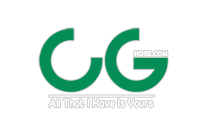## Workplace La Redoute Intérieurs 02: A Deep Dive into Design and Functionality
This document provides an in-depth analysis of the design philosophy and practical considerations behind "Workplace La Redoute Intérieurs 02," focusing on its innovative blend of aesthetics and functionality within a contemporary office environment. We will explore various aspects, from the initial concept and design principles to the material choices, technological integration, and overall impact on employee well-being and productivity.
Part 1: Conceptualization and Design Principles
The design of "Workplace La Redoute Intérieurs 02" stems from a holistic approach that prioritizes *employee experience* and *sustainable practices*. The initial brief emphasized creating a space that fostered *collaboration*, *innovation*, and *well-being*, moving beyond the traditional, sterile office environment. This led to a design philosophy centered around several key principles:
* Flexibility and Adaptability: The design incorporates *modular furniture* and *flexible layouts*, allowing the space to easily adapt to changing needs and team structures. This is crucial in a dynamic work environment where projects and team compositions evolve frequently. *Hot-desking* is accommodated, but integrated with personal storage solutions to ensure employees maintain a sense of order and ownership within the shared space.
* Biophilic Design: The incorporation of *natural elements* is a central feature. This includes abundant *natural light*, the extensive use of *plants*, and the integration of *natural materials* like wood and stone. This approach aims to reduce stress, improve air quality, and boost employee mood and productivity – key elements of a *biophilic* workplace design.
* Ergonomics and Well-being: Every aspect, from chair design to workstation height, considers *ergonomic principles*. This includes provisions for *adjustable desks*, ensuring employees can work in comfortable and healthy postures. Quiet zones and breakout spaces are strategically located to provide opportunities for *rest and rejuvenation*, crucial for preventing burnout and maintaining focus.
* Technological Integration: "Workplace La Redoute Intérieurs 02" seamlessly integrates *technology* to enhance productivity and streamline workflows. This includes high-speed internet, collaborative software integration, and intuitive tech solutions throughout the space, minimizing technical frustrations and maximizing efficient communication. Emphasis is placed on *user-friendly interfaces* and intuitive technological integration to avoid disruptions in the workflow.
Part 2: Material Selection and Sustainability
The materials chosen for "Workplace La Redoute Intérieurs 02" reflect a commitment to both *aesthetic appeal* and *environmental responsibility*. The focus is on *sustainable sourcing*, opting for materials with minimal environmental impact throughout their lifecycle. Specific choices include:
* FSC-Certified Wood: The use of *FSC-certified wood* ensures that the timber used comes from responsibly managed forests, promoting sustainable forestry practices and minimizing deforestation. This contributes to the overall *eco-friendly* nature of the design.
* Recycled and Reclaimed Materials: Where possible, *recycled and reclaimed materials* have been incorporated, reducing waste and minimizing the environmental footprint of the project. This showcases a commitment to a *circular economy* model.
* Low-VOC Paints and Finishes: The selection of *low-VOC (Volatile Organic Compound) paints and finishes* prioritizes indoor air quality, creating a healthier and more comfortable environment for employees. This reflects a commitment to *employee health and well-being*.
* Durable and Long-lasting Materials: The choice of durable materials aims to extend the lifespan of the furniture and fittings, reducing the need for frequent replacements and minimizing waste in the long term. This exemplifies a focus on *long-term sustainability* and cost-effectiveness.
Part 3: Spatial Organization and Functionality
The spatial organization of "Workplace La Redoute Intérieurs 02" is carefully planned to facilitate various work styles and promote effective collaboration. Key features include:
* Open-plan Office Space: The design incorporates a significant amount of *open-plan office space*, fostering a sense of community and facilitating spontaneous collaboration. This is balanced with dedicated spaces for focused work to cater for differing working preferences.
* Collaboration Hubs: Designated *collaboration hubs* are equipped with technology to support teamwork and brainstorming sessions. These spaces are designed to be flexible and adaptable to accommodate different team sizes and project requirements. This enhances *teamwork and communication*.
* Quiet Zones and Breakout Spaces: Strategic placement of *quiet zones* and *breakout spaces* provides employees with opportunities to escape the noise and bustle of the open-plan area. These spaces encourage rest, relaxation, and focused individual work, contributing to improved concentration and reduced stress levels. These areas offer *refuge from distractions*.
* Meeting Rooms and Private Offices: A variety of *meeting rooms* of different sizes cater to various meeting needs, from small team discussions to larger presentations. *Private offices* are available for individuals who require a more secluded and focused work environment. The diversity of spaces caters for a range of working styles and preferences.
Part 4: Impact and Future Considerations
"Workplace La Redoute Intérieurs 02" aims to significantly improve *employee productivity* and *well-being*. The design’s impact will be assessed through a combination of quantitative and qualitative data, including employee surveys, productivity metrics, and observations of workspace utilization. Future considerations include:
* Adaptability to Future Needs: The design's inherent *flexibility* allows it to adapt to changing technological advancements and evolving work styles, ensuring its long-term relevance and efficiency.
* Continuous Improvement: Regular evaluations and feedback from employees will inform ongoing improvements and adjustments to the design, ensuring it continues to meet the needs of the workforce.
* Data-Driven Optimization: The collection of data on space utilization and employee feedback will allow for *data-driven optimization* of the workplace layout and design, maximizing its efficiency and effectiveness.
* Sustainability Monitoring: Continuous monitoring of the environmental impact of the design will help to identify areas for further improvement in *sustainable practices*.
In conclusion, "Workplace La Redoute Intérieurs 02" represents a significant advancement in office design, prioritizing *employee well-being*, *sustainable practices*, and *functional effectiveness*. Its integrated approach, combining *biophilic design*, *ergonomic principles*, and smart technological integration, creates a dynamic and inspiring work environment that fosters collaboration, innovation, and productivity. The project serves as a model for future workplace design, emphasizing the importance of creating spaces that support both the individual and the collective success of the organization.










































